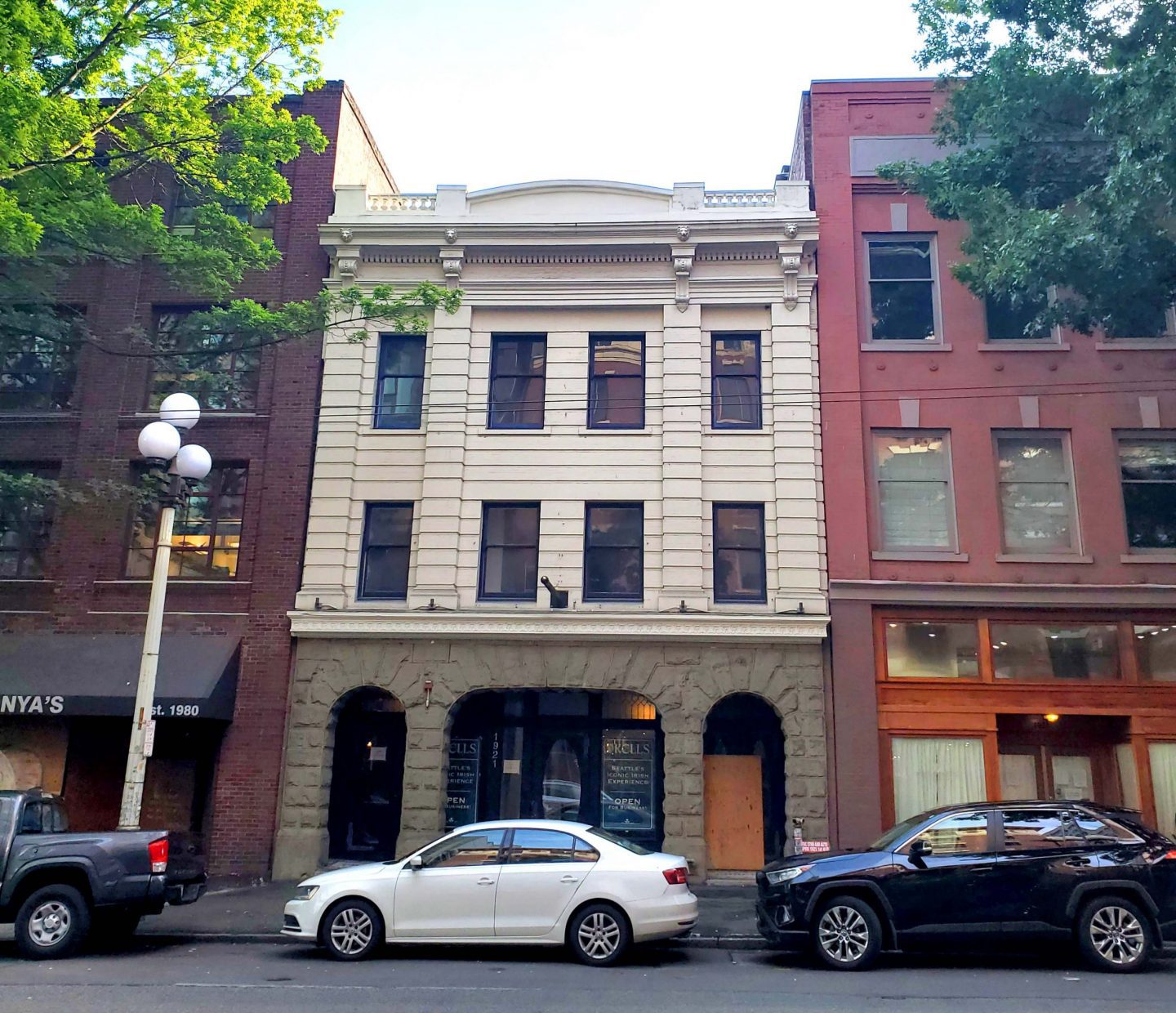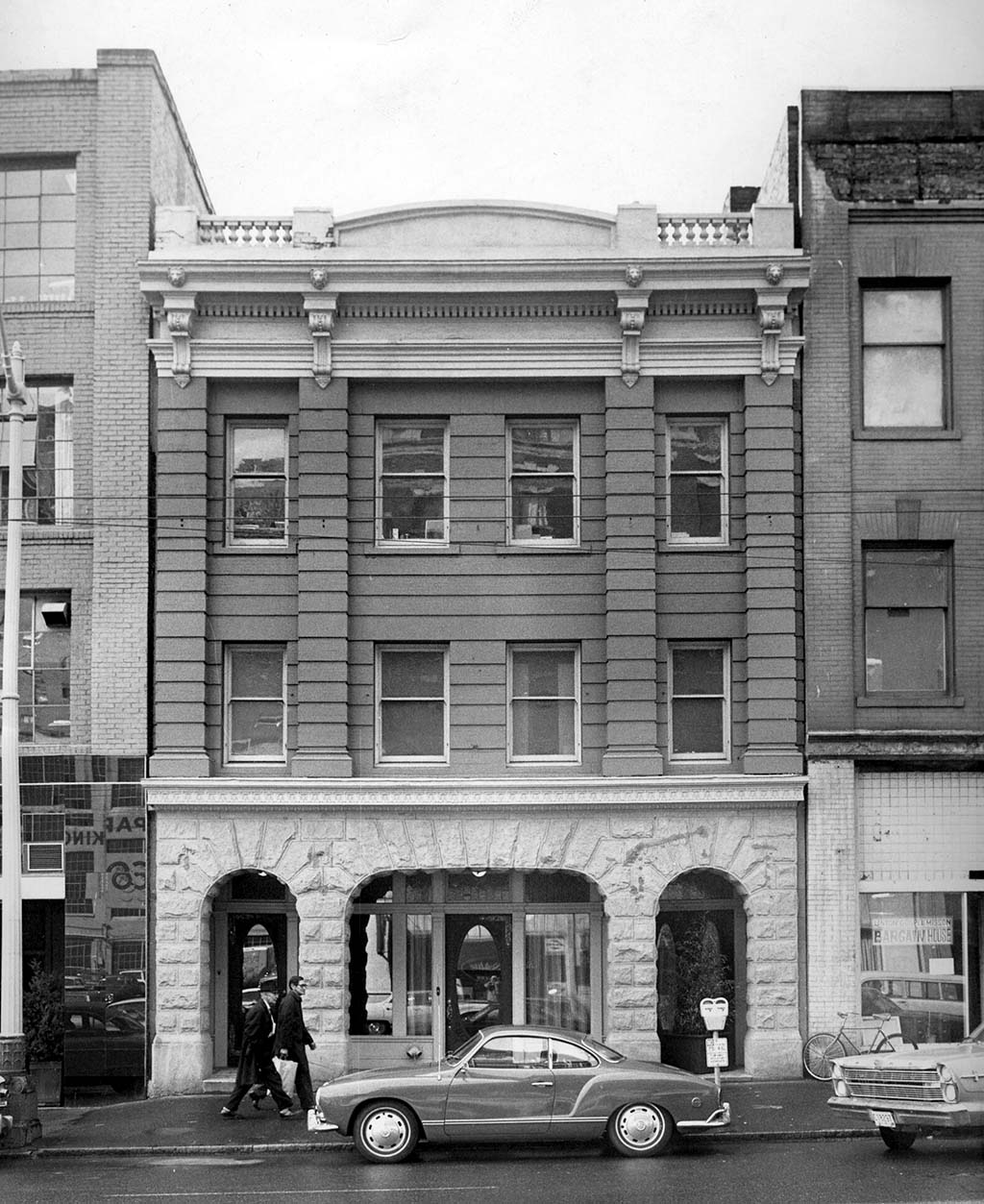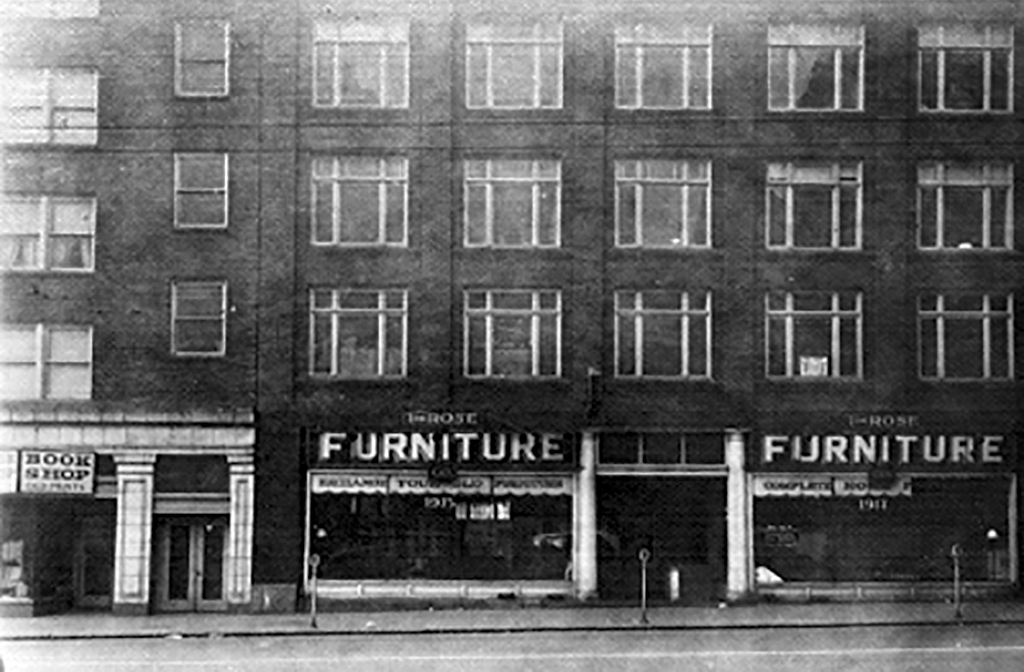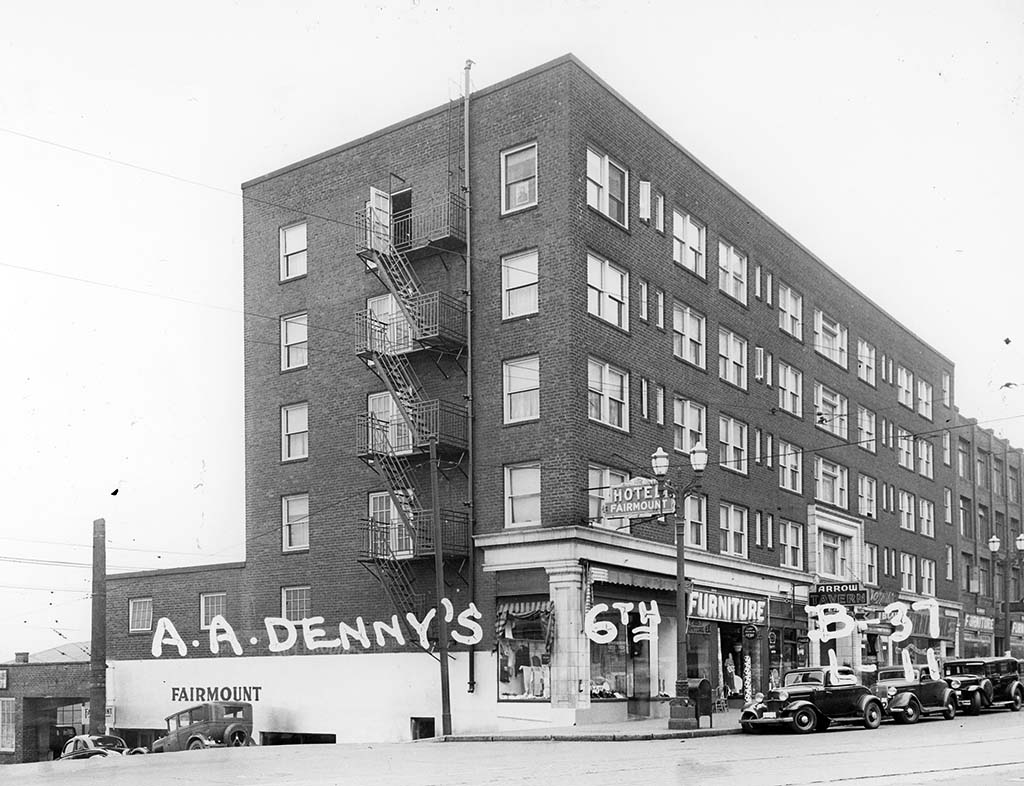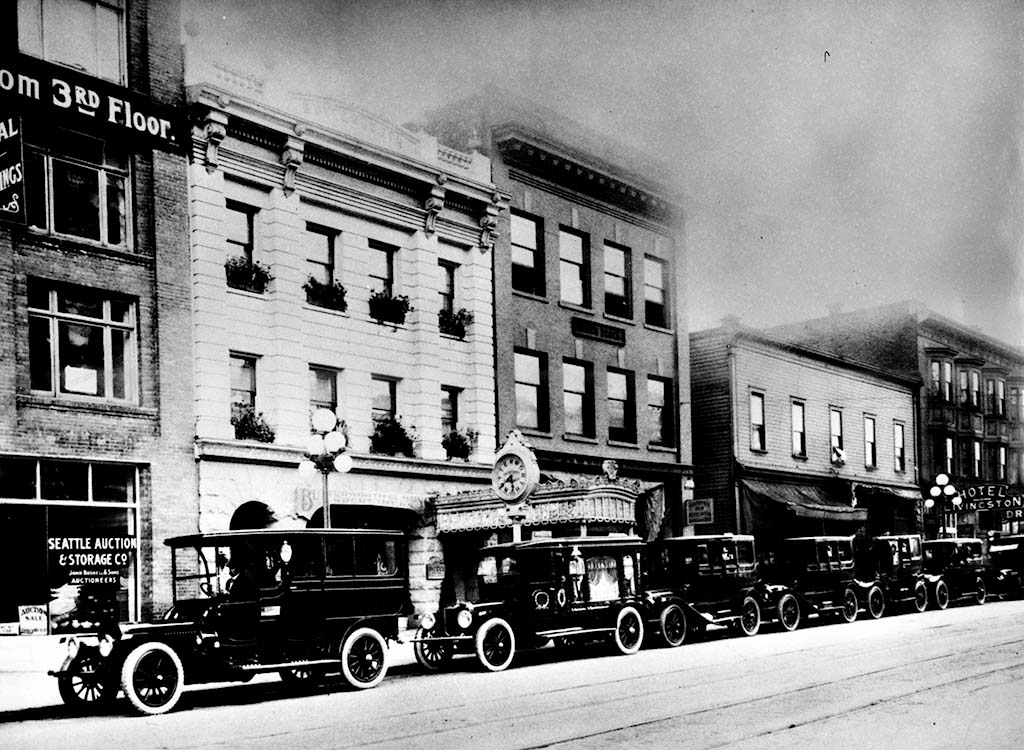Butterworth, Smith, Alaska Trade, and Fairmont Buildings
1921 1st Ave
-
Butterworth, Smith, Alaska Trade, and Fairmont buildings
1921 1st Ave
1921 1st Ave
The Smith Block Building, Butterworth Building, and Alaska Trade Building were jointly rehabilitated in 1977 by Ralph Anderson & Partners. The Smith Building (the northernmost of the three) was constructed in 1906. Originally a barbers’ supply business and podiatrist office, from 1920 on it served as offices and lodge hall for the Marine Engineers Benevolent Association. The deep entry vestibule is a remnant of a 1960’s-era theater and marquee, with the building’s original entry to the upper floors still serving the bed and breakfast located on the upper floors today.
Adjacent to the Smith Building is one of the fanciest buildings in the Market neighborhood, the Butterworth Building that was constructed in 1903. This was John Graham Sr.’s first commercial building commission, and Seattle’s first modern mortuary, serving as such until the business relocated to Capitol Hill in 1923. This building was independently listed on the National Register of Historic Places in 1971, prior to the nomination and listing of the Market itself. A distinctive Beaux Arts design with rusticated sandstone and dry-set Roman bricks, it is capped with a galvanized iron cornice decorated with lion heads and balustrades at the parapet. The Post Alley entrance is utilitarian in character, visually blending from a westerly viewpoint with the rest of the Market.
Edgar Butterworth, the eponymous undertaker, was a pioneer coffin-maker and is credited with introducing the terms “mortuary” and “mortician” in connection with the undertaking business. This ostentatious building boasted the first elevator on the Pacific Coast designed to transport corpses.
South of the Butterworth Building stands the Alaska Trade Building, which was concurrently listed on the National Historic Register with the Butterworth Building. Erected in 1910, this was one of the first steel and concrete-frame structures built in the Market area. In 1921 it was purchased by the Central Labor Council along with affiliated trade unions and trade councils and became the headquarters and printing plant for the nation’s first labor-owned newspaper, The Seattle Union Record, from 1921-1928. Famously, this paper published an essay by Mary Louise Strong which proceeded America’s first General Strike, on February 6, 1919. Some 35,000 shipyard workers striking for a post-war salary increase were joined by 65,000 sympathizers in a strike that lasted until February 11.
On the corner of First Avenue and Stewart Street stands the Fairmount Building and behind that, the J. P. Jones Building, formerly the Fairmount garage. The garage was built in the mid-1920s, around the same time that automobile congestion prompted construction of the car parks on the Municipal Market and the Champion Building. The main entrance continues to be situated on Stewart Street. The Fairmount Hotel stood at the corner. When built in 1914 it was the first large hotel to be constructed near the Market after the North Arcade (Market House) was completed. Another ostentatious structure, this was considered unique for the time as it provided large, extravagantly furnished rooms with views of the Market and the Sound. Twenty-eight of its 68 rooms had private baths and telephones. Historically, retail tenants along First Avenue included creameries, a furniture store, and an electrical supply company.
The Fairmount and J. P. Jones buildings remain in private ownership and were jointly rehabilitated in a $1.2 million project in 1976-1977 by Ralph Anderson & Partners.
Keep walking south on 1st Avenue, stopping at the corner of 1st and Stewart to admire the sleek lines of the Inn at the Market across the street. Walk one more block south to 1st and Pine. Take a right and stop at the mouth of Post Alley, in front of Rachel’s Ginger Beer.
